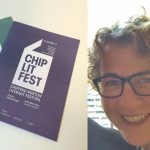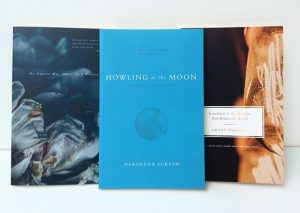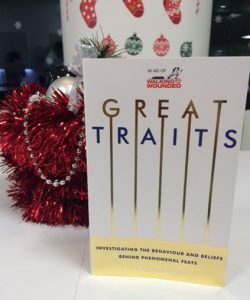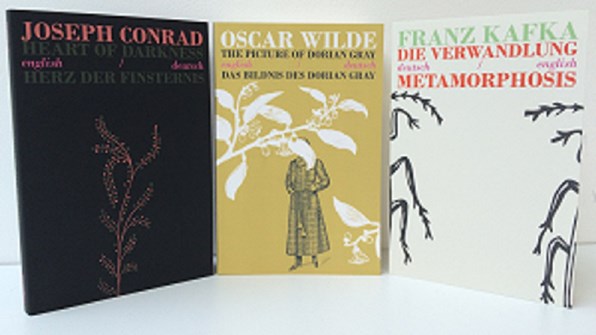
Parapara books was founded by Natasha Vavere and publishes bilingual books, at the moment concentrating on classic titles but looking to move into new literature. We asked Natasha a few questions about starting Parapara and how she has made her concept a reality…
What was the inspiration behind Parapara Books?
I have always been fascinated in culture, language, and history. After completing a BA in Human Geography I wanted to find a way to combine my love of literature and culture, and after trying hard to learn German and Spanish for several years through textbook learning I became interested in parallel texts. I decided to create a publishing company with the creative mission of sharing languages, culture, and history. Although first focusing on some well-loved European classics, Parapara Books would eventually like to print new writing from countries which are not so common on western bookshelves, in languages from all over the world.
How did you come up with your name and logo?
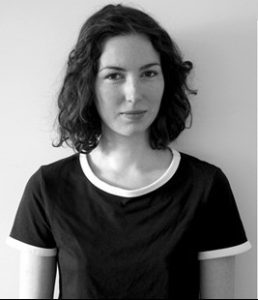 I was looking for a word that has a root in many languages, but was relevant to language exchange itself. I was thinking about a play on the word ‘mirror’ but settled on ‘para’ as it is the root of the word parallel in English, and in French, Spanish, Italian, and German (parallèle, paralela, parallelo, and parallel, respectively). I doubled the word to ‘parapara’ and added the divide through the middle to represent the mirrored translations of books we publish.
I was looking for a word that has a root in many languages, but was relevant to language exchange itself. I was thinking about a play on the word ‘mirror’ but settled on ‘para’ as it is the root of the word parallel in English, and in French, Spanish, Italian, and German (parallèle, paralela, parallelo, and parallel, respectively). I doubled the word to ‘parapara’ and added the divide through the middle to represent the mirrored translations of books we publish.
You concept is very unique. Why did you decide to publish bilingual books?
I was inspired to start the company because I was learning German from textbooks, and found that the exercises used language that was quite static and formal, and sometimes even a bit useless! I was eager to learn more emotional language, and the language of the everyday expressions. I am always reading a novel, and I wanted to find a way to combine these two interests. Finding only a few parallel books, mostly in short story form, I set out to
The translations are very important. How did you go about finding a translator/translations?
Yes, they definitely are. I’m mostly using translations which were completed close to the time of the original text and this is because the translations are more accurate for the era, but they are also less expensive for me as a new company for now. This might mean that some words are a bit out-dated, but after reading several academic articles on modern translation of, for example, Dickens, I felt confident that using an older translation was more authentic. This historical element adds another layer of enjoyment to Parapara Books, and as I say on my website: I hope people will see any differences as historical quirks and try to enjoy them for that! As I begin to publish new literature, I will have to find new translators – another adventure I am looking forward to actually.
How important was the layout to you – English on one side, the other language on the other page? Was this hard to get right?
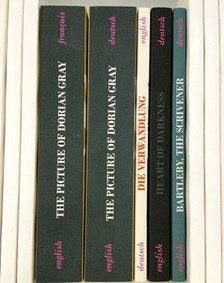 It took a long time to settle on a suitable layout! In most cases the French and German translations are longer than the English, so the paragraphs are not equal. I looked at how the few other parallel texts got around this problem and found it looked clumsy when they there was sometimes a gap, sometimes not, so I align all text. Parapara Books always place the original language of the text on the left hand side, I don’t want to give the impression that English is the most important language.
It took a long time to settle on a suitable layout! In most cases the French and German translations are longer than the English, so the paragraphs are not equal. I looked at how the few other parallel texts got around this problem and found it looked clumsy when they there was sometimes a gap, sometimes not, so I align all text. Parapara Books always place the original language of the text on the left hand side, I don’t want to give the impression that English is the most important language.
How important do you think reading in different languages is to learn the language?
I think it’s very important in helping a person get comfortable with grammatical rules and sentence structure. With a Parapara Book a reader can easily check on the opposite page for a word translation, rather than looking it up in the dictionary. You can pace yourself with a parallel text more easily than with a TV show or film in a foreign language, although I do find watching these helpful.
Who is your target audience?
The amazing thing about Parapara Books is that people of all language levels can use them; even for fluent people it can be fun to compare words! I imagine people who want to brush up on a language for a holiday or for work or fun will find them most useful, people who don’t have a whole lot of time to read novels and learning a language, who will benefit from combining both together!
What made you decide to go to print?
I had a lot of support and encouragement, from business advisors, the friendly and professional team at Clays, and my friends and family. My design team had done such a great job that they looked too beautiful to be 2D any longer.
Your covers are great and each cover has a similar style. How important is this to keep the Parapara Books branding consistent across all your titles?
Thank you! It is very important that there is design continuity so that Parapara Books are recognisable, so this design process took quite a long time. I used a great designer at Studio Novembre who designed my covers, promotional material, and website. A long consultation period is important; because once the designs are published it is best not to change again.
How are you finding the Clays experience?
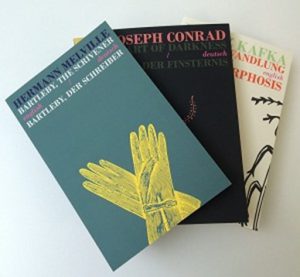 Incredibly supportive. I have felt so encouraged every time I have met with Rebecca and Georgina, they have helped make the printing process smooth and less scary, not only advising me on my actual print but also on events and ideas for the future.
Incredibly supportive. I have felt so encouraged every time I have met with Rebecca and Georgina, they have helped make the printing process smooth and less scary, not only advising me on my actual print but also on events and ideas for the future.
What is your top advice to new publishers?
Find creatives (translators, designers, writers) that you can trust and be frank with, don’t be afraid to say what you think, and create a brand and company mission that is recognisable and understandable to readers. Most importantly: check everything three times before sending it to print!
Click to follow Parapara books on Facebook, Twitter, Instagram and Pinterest, or find them at www.paraparabooks.com!

